Five things you need to know about the HTC Vive
There's nothing else quite like it, but the HTC Vive probably isn't for everyone.
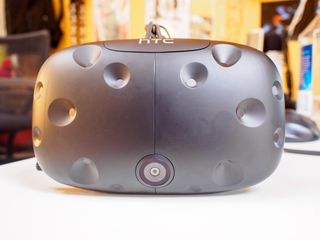
Deep down, every kid who has ever played a video game has been preparing to use the HTC Vive. The way we turn our bodies to match a turn in a racing game, or jump when something scary happens, or even throw a controller when we're mad is something that can actually be done in Vive. Whether you're sidestepping zombies for that perfect headshot or crawling around on the floor to get a better look at that Fantastic Contraption you've been working on all day, the way your physical body interacts in the real world matters.
These are incredible experiences, but the HTC Vive as a whole requires some thought as you decide whether it is for you.
With that in mind, we've assembled some of the most important things for you to know about the HTC Vive before you start planning out where it's going to live in your home.
Setup can be a little complicated
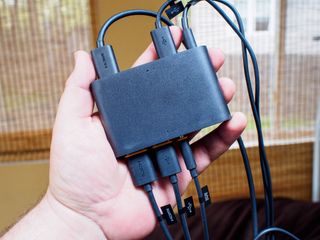
On top of already owning a powerful computer, the HTC Vive requires some thoughtful setup out of the box. The Lighthouses that provide the room-scale experience need to be mounted around 6 to 7 feet up, and positioned to work with one another diagonally across your room. HTC provides mounting equipment, but you need to know where to put the boxes before you start drilling into your walls. Part of that is making sure you have power outlets nearby, as each Lighthouse requires power.
The Vive headset also requires power separate from the PC, as there's a connector box that communicates with all of the hardware involved in this process before it hits your PC. The bottom line is you're going to want to make sure you know where everything is going to go ahead of time, and while that's not a deal-breaker by any stretch it does require some careful planning.
This doesn't mean Vive isn't portable
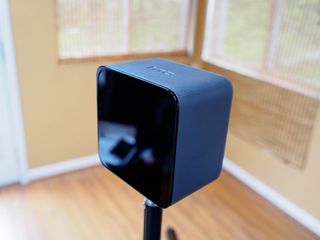
To test just how portable the HTC Vive is, we packed everything up and went to the local radio station to give a demonstration. Outside of making sure you have enough power for everything, the real challenge is the Lighthouses. The mounting connectors for the Vive are standard tripod screws, so if you have a tripod that can reach the appropriate height you're good to go.
In a pinch, we used a pair of $20 lighting tripods and mounted the brackets with zip ties just to be sure. It turns out that last part was entirely unnecessary. Everything but the PC fit in a backpack, and the demonstration went off without a hitch. If you're interested in taking your Vive somewhere to share with friends, it's not nearly as complicated as it seems if you have the right tools.
Get the Windows Central Newsletter
All the latest news, reviews, and guides for Windows and Xbox diehards.
Standing-only mode is still pretty great
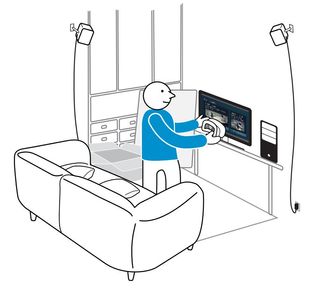
Vive's setup process offers two modes of configuration — room scale or standing-room only. One asks you to walk the perimeter of your space and map out the play area, while the other sets a small virtual square for you to stand in and interact. Not being able to walk around means some games aren't available to you, but right now that number is fairly small.
Standing-only mode still lets you wave your arms around, still lets you move your head around, and still lets you reach down and pick things up off the virtual ground. It's still a great experience, just not quite as immersive. In fact, if the Oculus Rift had touch controllers already, the experience would be fairly similar to Vive's standing only mode.
Using your phone in VR is a little limited
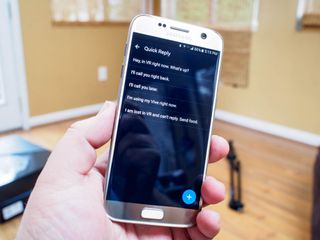
The HTC Vive app lets you send calls, texts, calendar notifications, and one or two other things to the Vive menu for you to interact with while inside VR. In the headset, the phone features take up one of the side panels in the menus you have available to you any time you want. This means you can quickly see the notification and choose to either act on it or go back to enjoying whatever you were doing. It's simple, straightforward, and slightly limited.
The SMS function in Vive includes a series of auto-responders you can quickly select to fire off a reply, but you have to choose what options are available to you before you put the headset on. There's no voice-to-text option or anything like that, and most of your normal phone notifications aren't actionable. While we're not suggesting Valve and HTC should full on mirror your phone to the Vive so you can interact with the whole interface in VR — though since we're on the subject, how awesome would Visor be in VR? — there's some room for this experience to improve.
If you're going to share Vive, keep cleaning stuff nearby

People are gross. When people put their faces on things, the end result is usually gross. This isn't likely to stop many people from sharing the HTC Vive, and that's a good thing. Sharing these experiences are awesome, but often lead to a deep desire to scrub your own face for a while.
There's a quick solution here. Keep a microfiber cloth — like the one HTC included in the box — and maybe an alcohol wipe or two nearby when you plan to share Vive. You can use the microfiber cloth on the lenses and headset, and use the alcohol wipe on the padding and controllers. Everyone wins, and everyone has fun.
Russell is a tech nerd who chases the best of everything, from phones to game consoles to laptops and everything glowing or beeping. He's the Managing Editor of gaming content for Mobile Nations and can be found contributing to all of the Mobile Nations sites. Reach out on Twitter!

